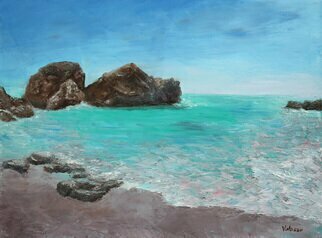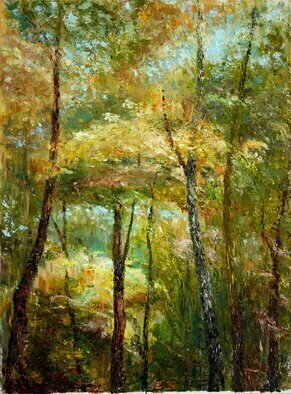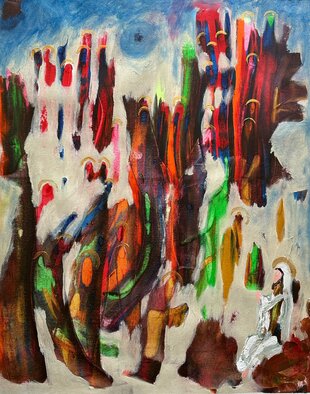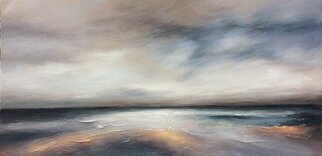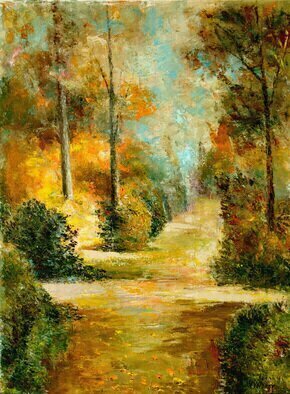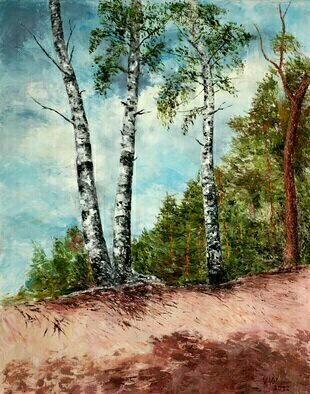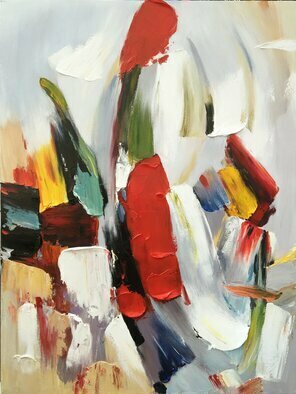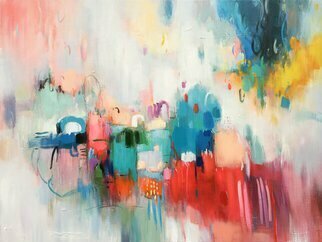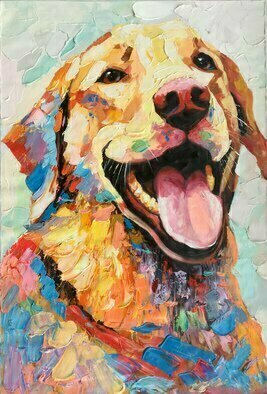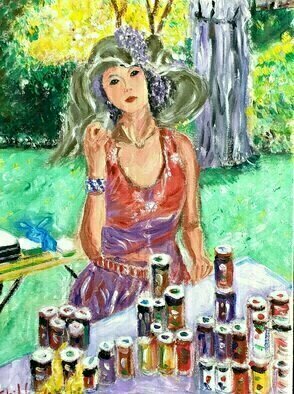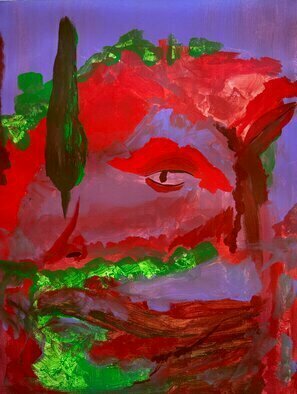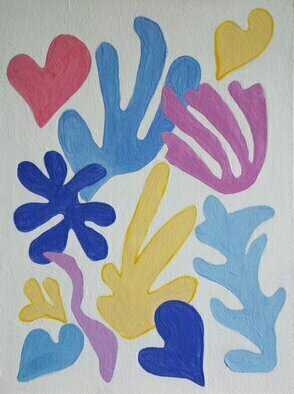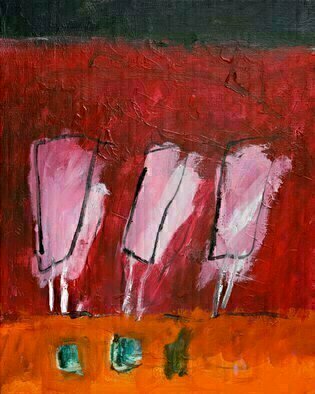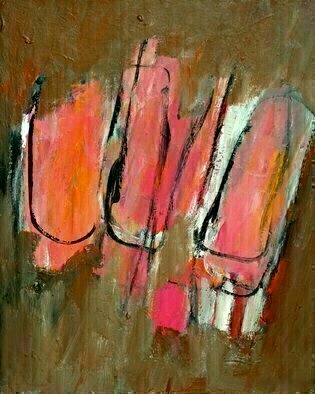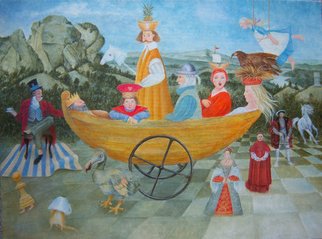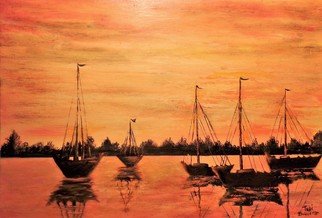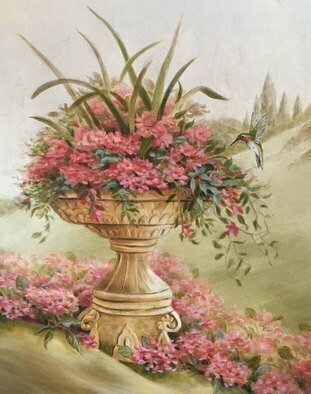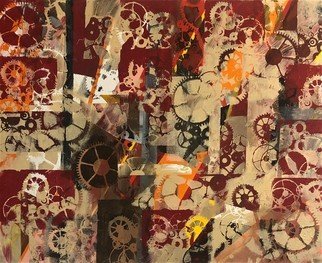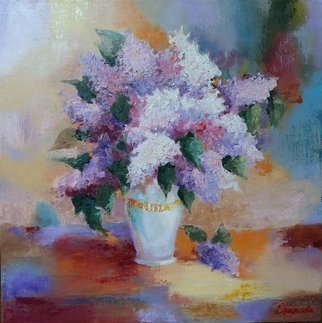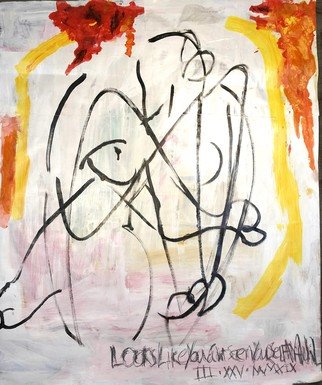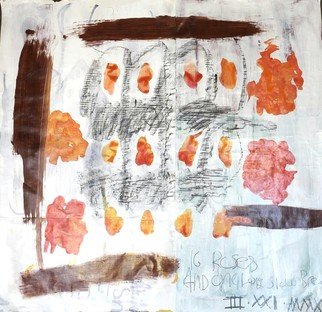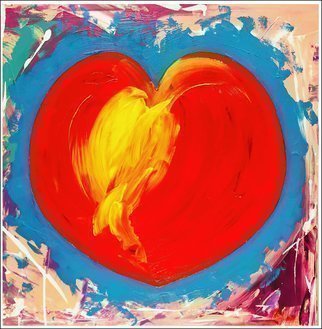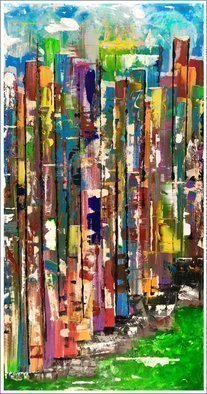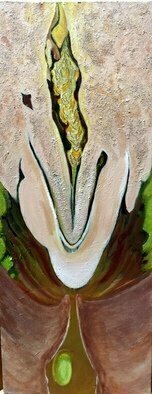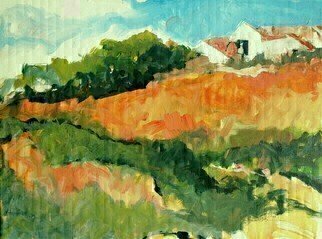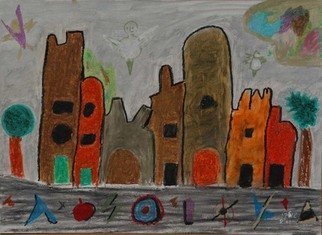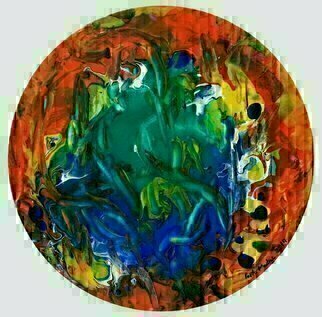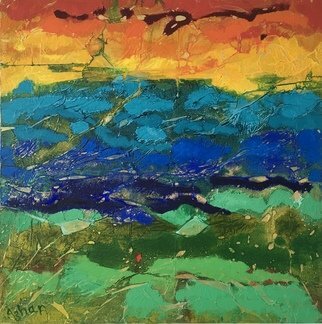Paintings For Sale - Price Range: $700 - $799
Page 1 of 32

Discover 915 original painting artworks for sale between $700 - $799. Contemporary emerging artists: Vladimir Volosov, Paulo Medina, Jinsheng You, Dan Shiloh, Ludmilla Wingelmaier, Engelina Zandstra, Heather Hyatt, Becky Soria, Teri Paquette, Marsha Bowers, Jim Lively, Larysa Uvarova, Everet Lucero, Mac Worthington, Daniel Clarke, Harris Gulko are exhibiting their affordable original art. You can buy artwork online and browse 32 pages for more originals at the end of this page. To view detailed information for any of these artworks click the image or browse the artist's portfolio website.
MORE »
Paulo Medina - Para mA, el arte, ha sido como una pequeA+-a barca en donde he cruzado muchas veces el mar. Una barca frA!gil y pequeA+-a, sin embargo, capaz de cruzar hacia grandes horizontes. La barca ha sido un instrumento Aotil, pero nada mA!s... La pintura es poesAa silenciosa SimA3nides Artistic experience, as a spectator, and then, more directly, as an artist, has meant for me the possibility of transcending and reaching certain spaces that are intangible, but lived daily. As a creator, to be in front of a blank canvas or a digital image to be manipulated, is to be faced with a challenge that of translating to the language of forms, textures and colors something that has not yet been conceptualized, but that exists somewhere and that I desire to capture, expressing it through those materials and tools at my disposal. It thereby becomes a kind of game, in which time disappears and one enters into communion with the aesthetic experience with its infinity of moments, which go from pain to ecstasy. Self-taught experimentation in the field of art, has been for me one of the great pleasures of life. La experiencia artAstica ...
Dan Shiloh - I was born in Jerusalem Israel. I attended an officers nautical school and served in the navy as an engineer on a destroyer. After the navy I moved to Chicago USA and studied architecture at U of I Chicago campus and graduated in 1972 . I moved back to Israel and opened an architectural office in a small settlement in the Galilee region which became very successful. I retired about 10 years ago and opened as a hobby a black smith studio where I made metal sculptures. In 2009 I moved to Tel Aviv and started painting and sculpting in clay which I do up to these days. I was always interested in arts and I enjoy my painting and sculpting very much. Every year I travel to Florence Italy for at least a month where I paint and sculpt in the Accademia de Arte. I think its about time to share my work with the public and I hope it will enrich the homes of who ever likes my works....
Ludmilla Wingelmaier - Unique idea and my emotion are the basis of a great work of art. Creating new worlds on the canvas, in dialogue with materials and technology, fascinates and inspires me. Many exhibitions since 2005 at galleries and institutions in Austria. Thanks to extensive art training, the artist works in techniques oil, acrylic, tempera, gouache, watercolor, ink. She has the ability to paint in the wide range of styles abstraction, impressionism, realism, iconography. Her paintings have been sold in private collections in Austria and internationally. ...
Engelina Zandstra - In the labyrinth of my thoughts there are many roads that are leading to the unknown. many roads are leading to the unknown - around every corner a surprise - fata morganas unprecedented views - paintings designed according to laws of their own. ...
Heather Hyatt - In my work as a fine artist, I use the mediums of graphite, coloured pencil and oil, in the styles realism, photo-realism, trompe l'oeil and portraiture, Ideas come from literature, metaphors, and the real world. Rather than the imitation of appearance, my concern is with the essence of the subject. In trompe l'oeil, it is the hardness and softness of guns and lingerie, which, when mounted in shadow boxes, become real. In the series,'Dante's Divine Comedy', executed in graphite, the object was to depict the universality of his ideas as they appear today. In all of my work, realism is my focus and goal. ...
Becky Soria - Subject matter in painting is merely the trigger that allows the expression of something more profound, unconscious and possibly hidden even from oneself, and therefore all inclusive, so viscerally immanent to humankind R. Alonzo Totems beyond Patriarchy May 2014 Nature has been qualified as a female organic form by most ancient cultures, but for the last millennia or so, the world has been primarily perceived and shaped by the masculine side of the species. Our recent history however has seen a trend towards a natural reversion to a feminine bias, with women becoming increasingly more crucial to all aspects of society. These works serve to remind us about these issues and others that we continue to face the world while reinventing the female figure as an emblem for current conditions and a new Totem for the future. The juxtaposition between the representations of the animals and plants in compromised an ailing conditions and the female form that seems to swallow and revive the life- infused aspects of her creation, render a sense of hope for a future in which the maternal provides a healing force to an ailing planet. Signs. Symbols. Sentinels February 2, 2013 The works of the present ...
Marsha Bowers - Marsha Bowers was born and raised in the Central Valley of California. She is a classically trained fine artist, skilled in the old Masters techniques of Flemish/Bistre and Venetian method using a grisaille underpainting and glazing with many layers. Most of her fine art paintings are rendered in oil. She sometimes applies real gold leaf into the artworks. Marsha finds inspiration in the old masters of the past. She spends many hours visiting Museums studying their work. Gothic and Renaissance are her favorite periods along with the Pre-Raphaelites artists. The artist loves the blending of the classical painting techniques with a more contemporary approach to her paintings. Her recent fine art paintings are of women, both figurative and portraiture. The inspiration for her paintings comes from her observations of life itself and through her own experiences. Each painting shares a message, story or emotion. Its what the artist herself describes as a "flowing" of the spirit, a creative process through which the artist paints a story unto the canvas, realizing that each viewer of her work may have their own interpretation of what the art is conveying. Most recently Marsha was invited to be included into the International ...
Jim Lively - Whether portrayed in the abstract, realism, or somewhere in between, I am most influenced by both the beautiful and unattractive components of contemporary urban culture. Many times, one painting will reflect both components. My art tends to focus upon interesting juxtapositions of close-up images of human faces. Often, the larger images border upon realism and are caught expressing a panoply of emotions usually directed at the other images that share the canvas. Several of my recent works such as the tongue in cheek entitled "Lenin and Things" contain unlikely combinations of images such as a statue of Lenin which is dwarfed by a billboard size fashion model displaying a vacuous stare. A number of works contain both large images and interrelated small images. For example in the painting "Staring at Natalie", all the smaller images are a depiction of a collective group of voyeurs staring at a larger image of a posed fashion model. I want those viewing the painting to be the ultimate voyeur. The viewer is not only drawn initially to the larger image in its own right but also cannot help but then notice the relationship of the smaller images to the large image. Works displayed ...
Mac Worthington - BIO Internationally recognized and locally renowned, Mac Worthington continues his inspirational fine art past his studio and into your home. Each piece reflects his desire for difference and neglect for the norm. Born and raised in Canton, Ohio also known as i?1/2Little Chicagoi?1/2, Mac was privileged to be molded around a family of artists. His father John i?1/2Jacki?1/2 Worthington was a local artist, well-known for this bronze sculptures, specifically busts for movie stars and sports figures included in the Pro Football Hall of Fame located in Canton, Ohio. His mother Marion Worthington was skilled in enameling and silver work. The combination of creative talent and environment made him destined for artistic success. Serving in the jungles of Vietnam at the age of nineteen Mac interpreted the indescribable feelings of war into powerful expressions of art. He attributes additional creativeness to influences such as Hells Angels, Elvis, Bob Dylan, Marlon Brando and the 60i?1/2s era. Going back to his roots he entered the world of heavy metal. Teaching himself to weld he used steel and iron to create massive, grandiose outdoor sculptures. Becoming more skilled with his mediums, he discovered the versatile use of high tech aluminum. This skill ...
Daniel Clarke - Daniel E. Clarke is a Los Angeles Native who has been painting his entire career in the Los Angeles area. His art education has included studying under the internationally famous Timothy Clark, UCLA Extension University, and Glendale College. He has explored both pictorial and abstract designs but is dedicated to a free flow of color and dynamic composition. Mr. Clarke has concentrated on the acrylic and watercolor medium, and paints on location in his Los Angeles based studio. He also maintains his paintings and sales in his own company called Berrypunch Gallery. ...
Harris Gulko - Rather than giving technical details concerning my paintings, I take the liberty to convey, in fewer than 150 words, the philosophy of life that influences all my paintings. My artwork cuts across artistic barriers, displaying many themes landscapes, seascapes, cloud formations, abstracts, childhood games, religious compositions and more. If there is one constant in my work, it is my inconsistency When I am at my easel I try to create on canvas what I am seeing. But often I go off on a tangent, and what ends up often bears little resemblance to what I was attempting to paint. My formula for success consists of ambition, drive, hard work, effort, energy, fear of failure, patience, perspiration and persistence. Life and love are made of time. Privileged those who find love in time. Wise those who express love, before life runs out of time....
(Page 1 of 32) - MORE ARTWORKS
Artists Describing Their Art:
Vladimir Volosov - I was born in 1937 in Leningrad, USSR (now St. Petersburg, Russia). My way to art was a lengthy one. Before becoming an artist, I studied for thirty years at the forefront of modern physics as a PhD scientist and professor, author more than 150 scientific articles in contemporary laser physics. Thirty years of strenuous scientific work on the front edge of modern physics gives me a deep feeling for the anxiety and unprotectedness of the world's beauty. The formula, "beauty saves the world" fits my own attitude. My creed is also embodied in the statement: "to have time to realize everything given to you by Nature." At the threshold of my fifties, I decided to live one more life, a new, alluring life of the free artist. I walked away from my established scientific career and completely devoted myself to painting. In 1991 I founded and headed the association "Light, Color and Art" to connect with scientists engaged in the arts. The main directions of my paintings are lyrical realism and abstract compositions. My paintings are about light, color, atmosphere and space. For me, the most important elements are light and color and their juxtaposition/nexus/meeting of...Paulo Medina - Para mA, el arte, ha sido como una pequeA+-a barca en donde he cruzado muchas veces el mar. Una barca frA!gil y pequeA+-a, sin embargo, capaz de cruzar hacia grandes horizontes. La barca ha sido un instrumento Aotil, pero nada mA!s... La pintura es poesAa silenciosa SimA3nides Artistic experience, as a spectator, and then, more directly, as an artist, has meant for me the possibility of transcending and reaching certain spaces that are intangible, but lived daily. As a creator, to be in front of a blank canvas or a digital image to be manipulated, is to be faced with a challenge that of translating to the language of forms, textures and colors something that has not yet been conceptualized, but that exists somewhere and that I desire to capture, expressing it through those materials and tools at my disposal. It thereby becomes a kind of game, in which time disappears and one enters into communion with the aesthetic experience with its infinity of moments, which go from pain to ecstasy. Self-taught experimentation in the field of art, has been for me one of the great pleasures of life. La experiencia artAstica ...
Dan Shiloh - I was born in Jerusalem Israel. I attended an officers nautical school and served in the navy as an engineer on a destroyer. After the navy I moved to Chicago USA and studied architecture at U of I Chicago campus and graduated in 1972 . I moved back to Israel and opened an architectural office in a small settlement in the Galilee region which became very successful. I retired about 10 years ago and opened as a hobby a black smith studio where I made metal sculptures. In 2009 I moved to Tel Aviv and started painting and sculpting in clay which I do up to these days. I was always interested in arts and I enjoy my painting and sculpting very much. Every year I travel to Florence Italy for at least a month where I paint and sculpt in the Accademia de Arte. I think its about time to share my work with the public and I hope it will enrich the homes of who ever likes my works....
Ludmilla Wingelmaier - Unique idea and my emotion are the basis of a great work of art. Creating new worlds on the canvas, in dialogue with materials and technology, fascinates and inspires me. Many exhibitions since 2005 at galleries and institutions in Austria. Thanks to extensive art training, the artist works in techniques oil, acrylic, tempera, gouache, watercolor, ink. She has the ability to paint in the wide range of styles abstraction, impressionism, realism, iconography. Her paintings have been sold in private collections in Austria and internationally. ...
Engelina Zandstra - In the labyrinth of my thoughts there are many roads that are leading to the unknown. many roads are leading to the unknown - around every corner a surprise - fata morganas unprecedented views - paintings designed according to laws of their own. ...
Heather Hyatt - In my work as a fine artist, I use the mediums of graphite, coloured pencil and oil, in the styles realism, photo-realism, trompe l'oeil and portraiture, Ideas come from literature, metaphors, and the real world. Rather than the imitation of appearance, my concern is with the essence of the subject. In trompe l'oeil, it is the hardness and softness of guns and lingerie, which, when mounted in shadow boxes, become real. In the series,'Dante's Divine Comedy', executed in graphite, the object was to depict the universality of his ideas as they appear today. In all of my work, realism is my focus and goal. ...
Becky Soria - Subject matter in painting is merely the trigger that allows the expression of something more profound, unconscious and possibly hidden even from oneself, and therefore all inclusive, so viscerally immanent to humankind R. Alonzo Totems beyond Patriarchy May 2014 Nature has been qualified as a female organic form by most ancient cultures, but for the last millennia or so, the world has been primarily perceived and shaped by the masculine side of the species. Our recent history however has seen a trend towards a natural reversion to a feminine bias, with women becoming increasingly more crucial to all aspects of society. These works serve to remind us about these issues and others that we continue to face the world while reinventing the female figure as an emblem for current conditions and a new Totem for the future. The juxtaposition between the representations of the animals and plants in compromised an ailing conditions and the female form that seems to swallow and revive the life- infused aspects of her creation, render a sense of hope for a future in which the maternal provides a healing force to an ailing planet. Signs. Symbols. Sentinels February 2, 2013 The works of the present ...
Marsha Bowers - Marsha Bowers was born and raised in the Central Valley of California. She is a classically trained fine artist, skilled in the old Masters techniques of Flemish/Bistre and Venetian method using a grisaille underpainting and glazing with many layers. Most of her fine art paintings are rendered in oil. She sometimes applies real gold leaf into the artworks. Marsha finds inspiration in the old masters of the past. She spends many hours visiting Museums studying their work. Gothic and Renaissance are her favorite periods along with the Pre-Raphaelites artists. The artist loves the blending of the classical painting techniques with a more contemporary approach to her paintings. Her recent fine art paintings are of women, both figurative and portraiture. The inspiration for her paintings comes from her observations of life itself and through her own experiences. Each painting shares a message, story or emotion. Its what the artist herself describes as a "flowing" of the spirit, a creative process through which the artist paints a story unto the canvas, realizing that each viewer of her work may have their own interpretation of what the art is conveying. Most recently Marsha was invited to be included into the International ...
Jim Lively - Whether portrayed in the abstract, realism, or somewhere in between, I am most influenced by both the beautiful and unattractive components of contemporary urban culture. Many times, one painting will reflect both components. My art tends to focus upon interesting juxtapositions of close-up images of human faces. Often, the larger images border upon realism and are caught expressing a panoply of emotions usually directed at the other images that share the canvas. Several of my recent works such as the tongue in cheek entitled "Lenin and Things" contain unlikely combinations of images such as a statue of Lenin which is dwarfed by a billboard size fashion model displaying a vacuous stare. A number of works contain both large images and interrelated small images. For example in the painting "Staring at Natalie", all the smaller images are a depiction of a collective group of voyeurs staring at a larger image of a posed fashion model. I want those viewing the painting to be the ultimate voyeur. The viewer is not only drawn initially to the larger image in its own right but also cannot help but then notice the relationship of the smaller images to the large image. Works displayed ...
Mac Worthington - BIO Internationally recognized and locally renowned, Mac Worthington continues his inspirational fine art past his studio and into your home. Each piece reflects his desire for difference and neglect for the norm. Born and raised in Canton, Ohio also known as i?1/2Little Chicagoi?1/2, Mac was privileged to be molded around a family of artists. His father John i?1/2Jacki?1/2 Worthington was a local artist, well-known for this bronze sculptures, specifically busts for movie stars and sports figures included in the Pro Football Hall of Fame located in Canton, Ohio. His mother Marion Worthington was skilled in enameling and silver work. The combination of creative talent and environment made him destined for artistic success. Serving in the jungles of Vietnam at the age of nineteen Mac interpreted the indescribable feelings of war into powerful expressions of art. He attributes additional creativeness to influences such as Hells Angels, Elvis, Bob Dylan, Marlon Brando and the 60i?1/2s era. Going back to his roots he entered the world of heavy metal. Teaching himself to weld he used steel and iron to create massive, grandiose outdoor sculptures. Becoming more skilled with his mediums, he discovered the versatile use of high tech aluminum. This skill ...
Daniel Clarke - Daniel E. Clarke is a Los Angeles Native who has been painting his entire career in the Los Angeles area. His art education has included studying under the internationally famous Timothy Clark, UCLA Extension University, and Glendale College. He has explored both pictorial and abstract designs but is dedicated to a free flow of color and dynamic composition. Mr. Clarke has concentrated on the acrylic and watercolor medium, and paints on location in his Los Angeles based studio. He also maintains his paintings and sales in his own company called Berrypunch Gallery. ...
Harris Gulko - Rather than giving technical details concerning my paintings, I take the liberty to convey, in fewer than 150 words, the philosophy of life that influences all my paintings. My artwork cuts across artistic barriers, displaying many themes landscapes, seascapes, cloud formations, abstracts, childhood games, religious compositions and more. If there is one constant in my work, it is my inconsistency When I am at my easel I try to create on canvas what I am seeing. But often I go off on a tangent, and what ends up often bears little resemblance to what I was attempting to paint. My formula for success consists of ambition, drive, hard work, effort, energy, fear of failure, patience, perspiration and persistence. Life and love are made of time. Privileged those who find love in time. Wise those who express love, before life runs out of time....
